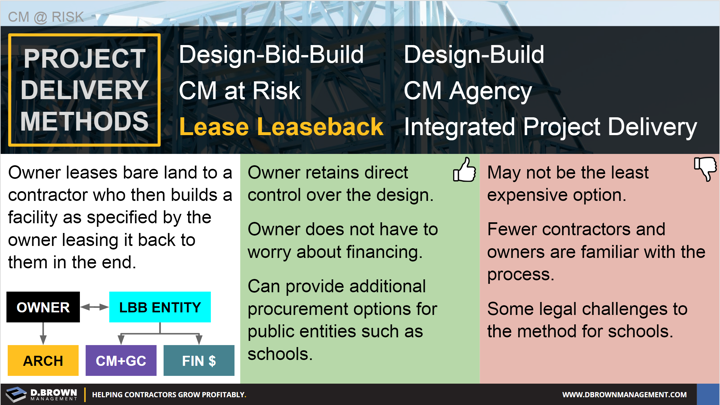The project may be managed like a Design-Build, where both design and construction are integrated or like CM at Risk, where the Project Owner retains direct control over the design.
The difference is that the contractor is partnered with someone who provides the financing for the project and a separate entity is formed for the specific purpose of building the project then leasing it back to the customer.
The lease may be structured over different time periods and at the end of the lease term, the customer may or may not own the building.
This method allows the Project “Owner” the opportunity to get a facility that suits their very specific needs with no capital outlay up front. Sometimes, the land is owned by the customer and the bare land is leased to the contractor for $1 and then the completed building is leased back to the customer.

